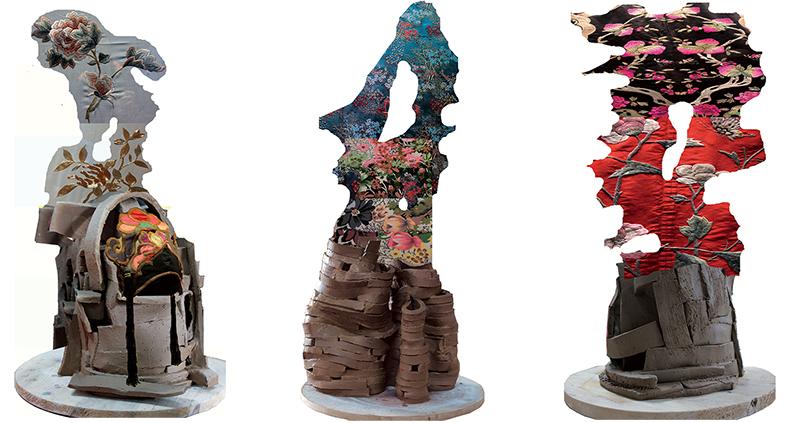Hervé Le Nost
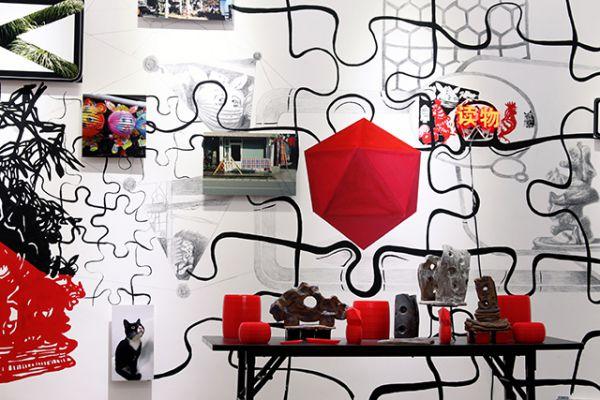
From 4 January to 25 February 2017
E Art Chine is installed in Hangzhou, capital of Zhejiang province. Hangzhou is a city of eleven million inhabitants. The premises of E Art ate located in one of the city’s newest districts close to preparatory schools for the Hangzhou Academy of Fine Arts, and Chinese artists’ studios. Formed by E Art Campus and E Art Espace, the platform associates with its educational and artistic projects French artists and teachers, as well as Chinese students interested in French art and culture.
The principle behind the residency is to offer artists a work and exhibition space with E-Art Espace. Times are earmarked for meetings with Chinese students in their study space. E-Art Campus prepares these degree-holding students for a Master’s degree in an art school in France. They work in the form of interviews and workshops with French guest artists.
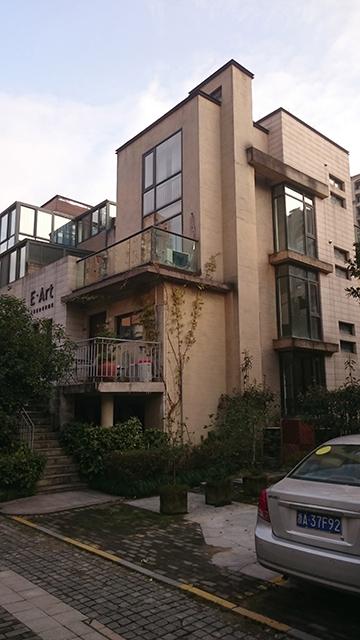
At the invitation of Lan Ting, founder and director of E Art Chine, I had a two-month residency in Hangzhou. That proposition led to her visiting my studio in December 2014, among a selection of artist’s studios in France. I also had exchanges with Sujuan Xu, director of E Art France.
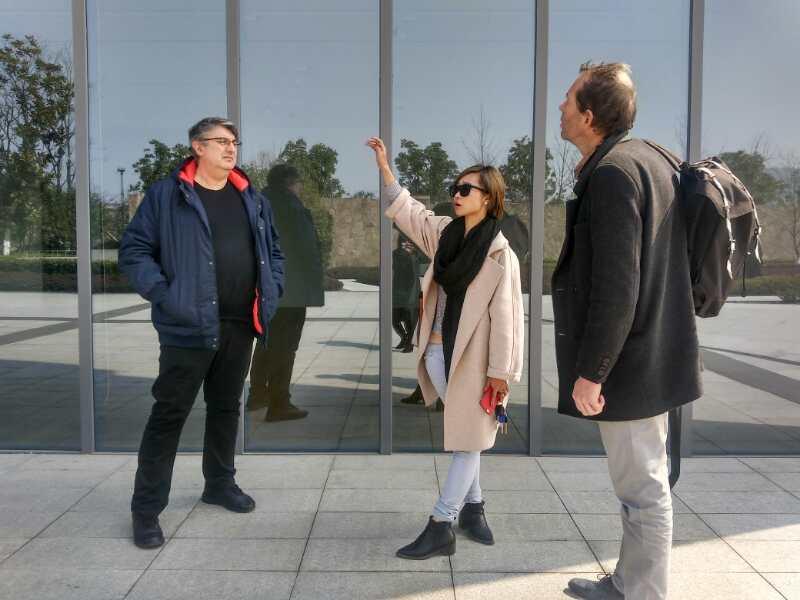
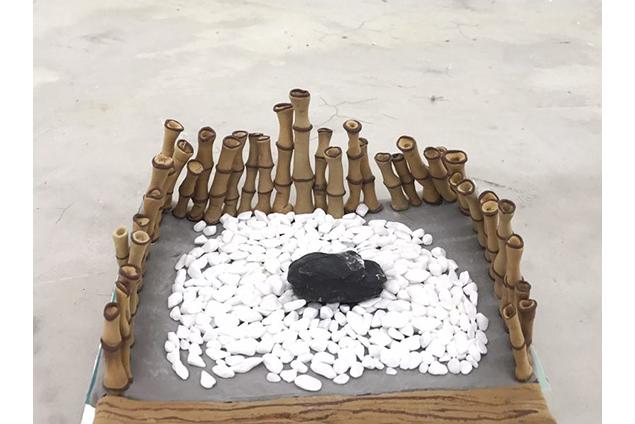
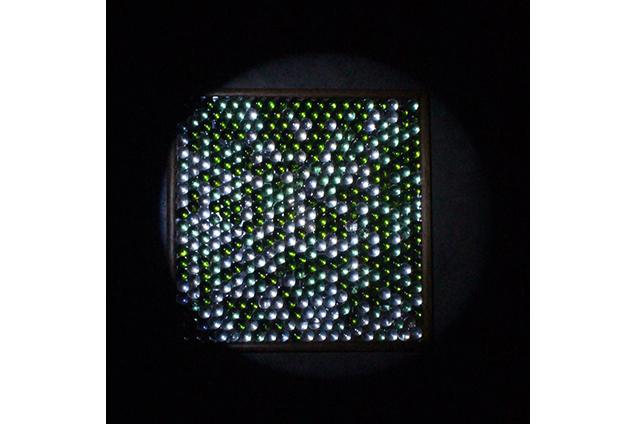
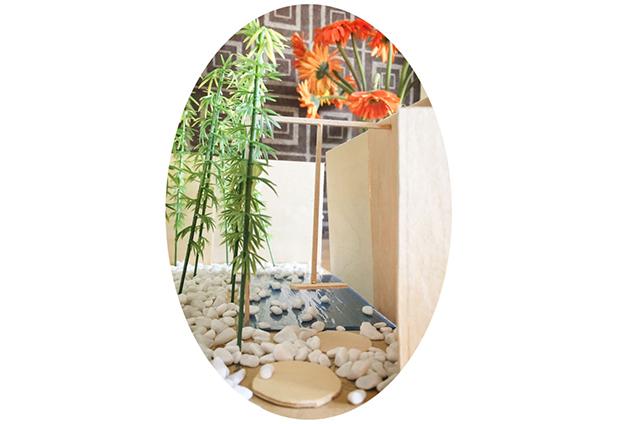
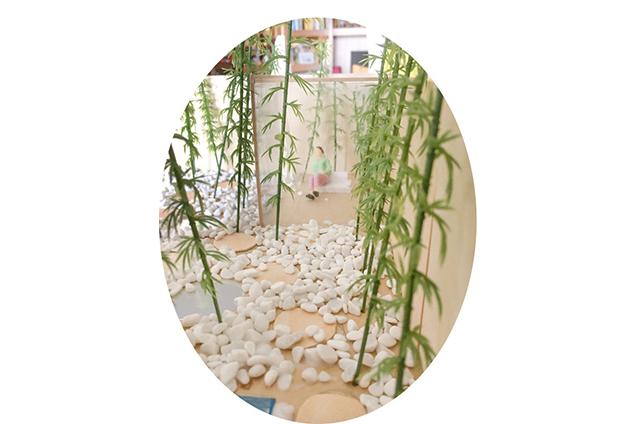
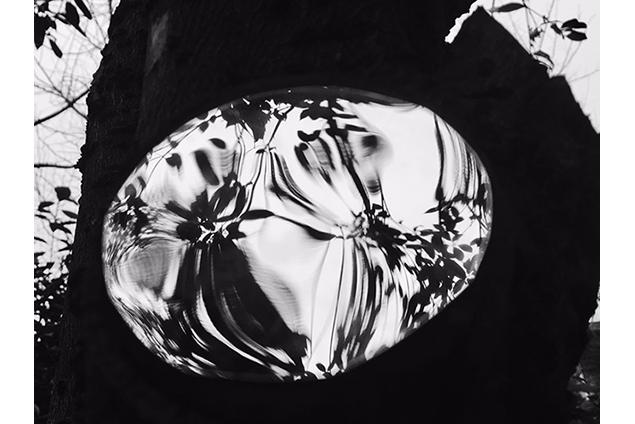
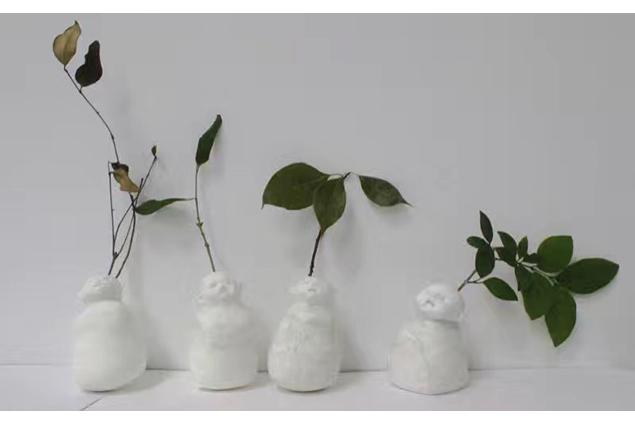
The residency combined several moments, as far as I was concerned: work in the studio, encounters, travels, visits, and accompaniment for the research undertaken by students. Invited to conduct a workshop, I proposed that each participant should define the space of a garden, and with that I associated art history courses. The students responded very freely through projects which they presented in the form of sketches, 3D digitizations, models, photographs and the like… I also monitored the preparation of their book.
Those students assisted me in the preparation of the exhibition “Lire les choses/Reading Things”, with regard to my methods, visits, and executions of various elements.
The residency was organized in a natural way as a rather community-oriented living place, Two Chinese students studying French language, Eva and Marie, produced the Chinese translation of my book. They also managed the social networks and communications for E Art.
During those two months, Lan Ting organized valuable meetings with the authorities of the academy and personalities in the Chinese art world, and studio visits.
Getting one’s bearings :
To begin with, situating the various zones and parts of the city on the plan turned out to be necessary. Getting my bearings. I failed to clearly establish the axes and boundaries of Hangzhou. In January and February, because of the brisk climate, people got about to some extent on foot, with plenty of people taking taxis and buses. The ratio of proportions between the city and its users was measured for a few days in the sight of large groups of candidates wearing coloured waistcoats registered for the entrance competition to the Hangzhou Academy. They strolled around the Academy. Those 175,000 candidates were applying for the 1500 available places offered by the Academy in the first year. They were also the subject of a film made by Daniel Buren with Joel Benzakin in that same period. The organization of the different stages was managed by Lan Ting and E-Art. I walked along the avenues, looking at the monumental architecture, the construction sites, the commercial districts, the housing, the roads and the motorways. The visual ensemble of the various elements was put together in a functional mental map, vital to master in order to enable me to imagine a possible circulation.
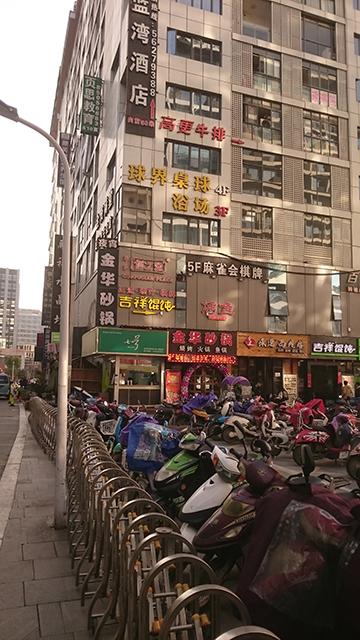
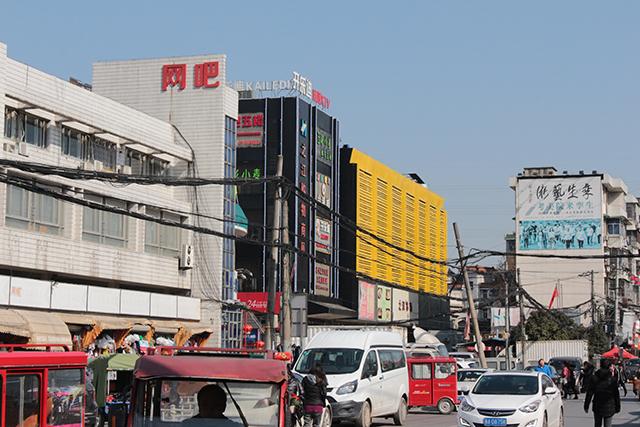
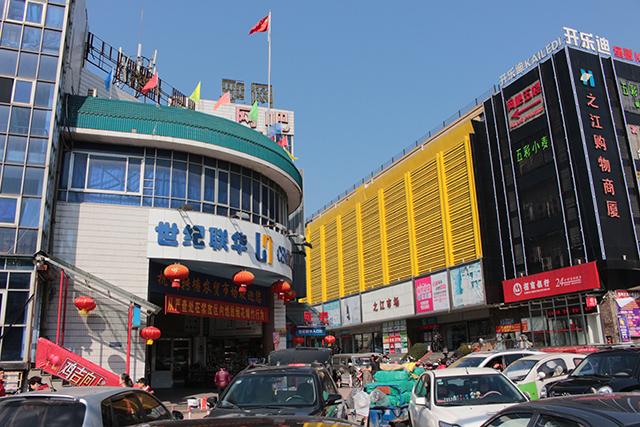
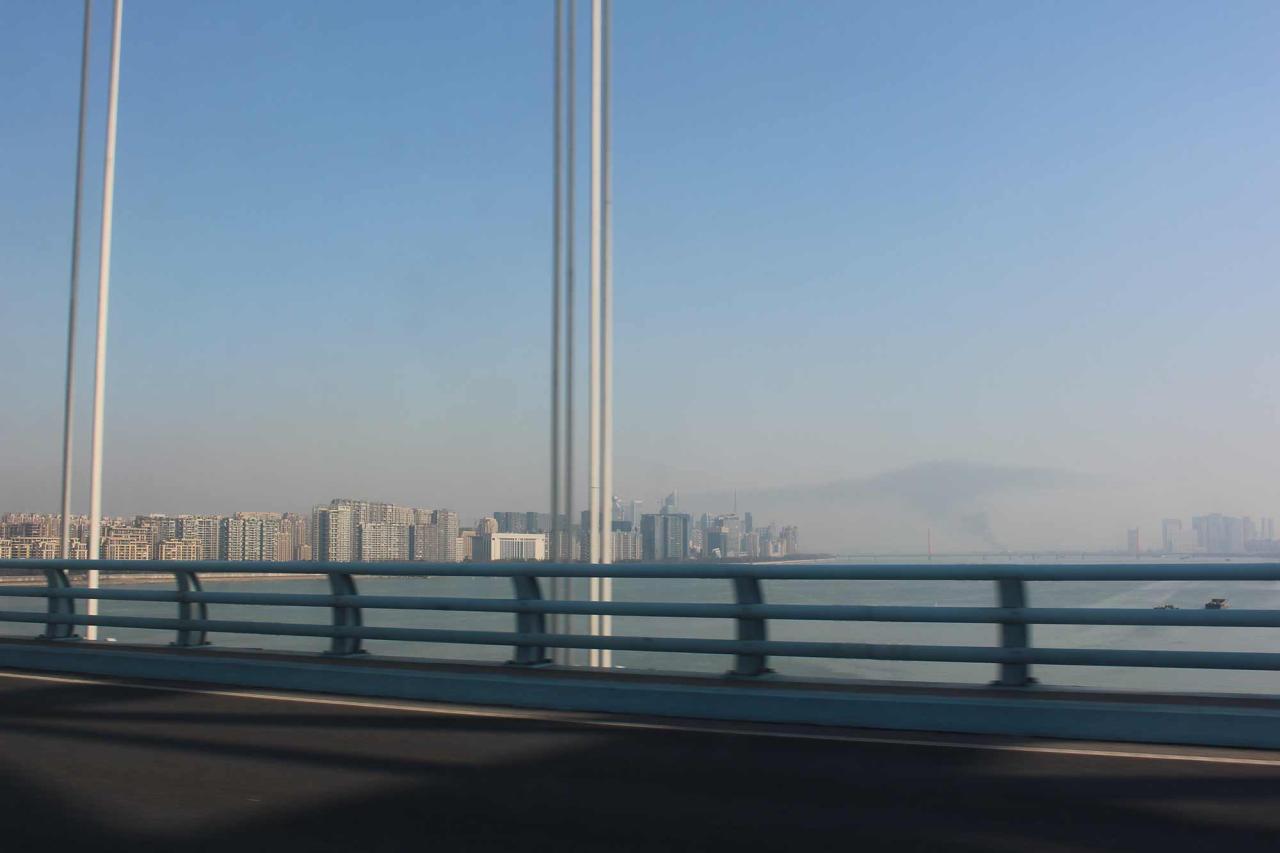
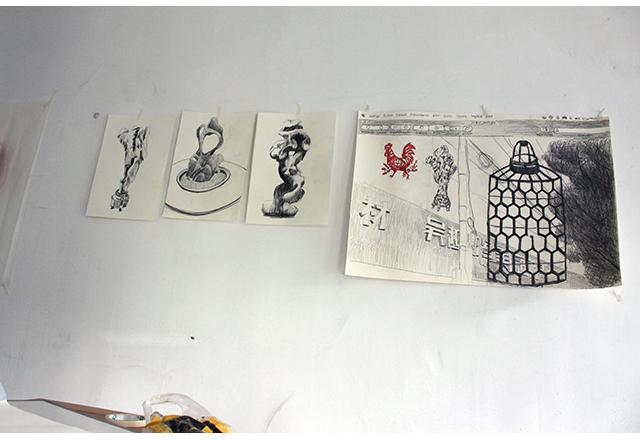
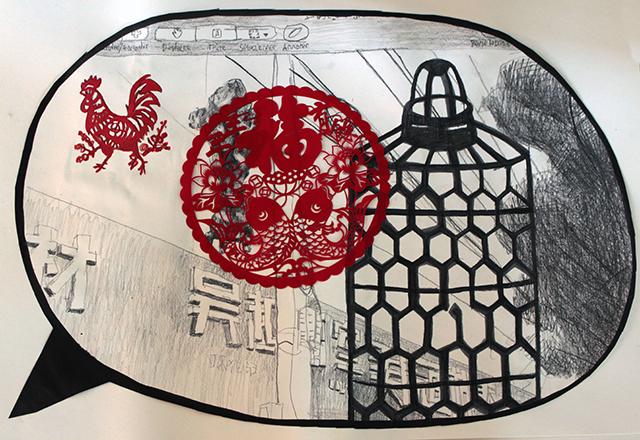
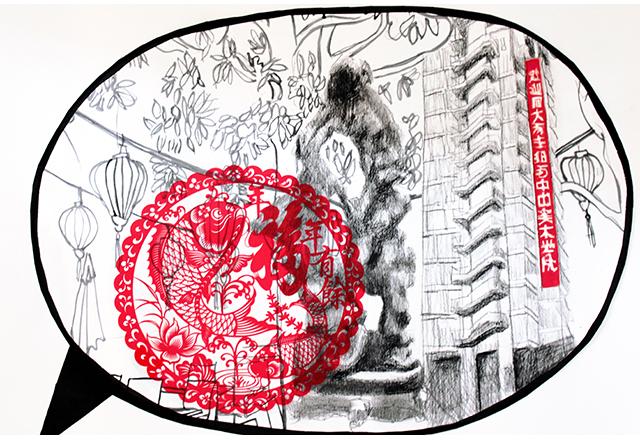
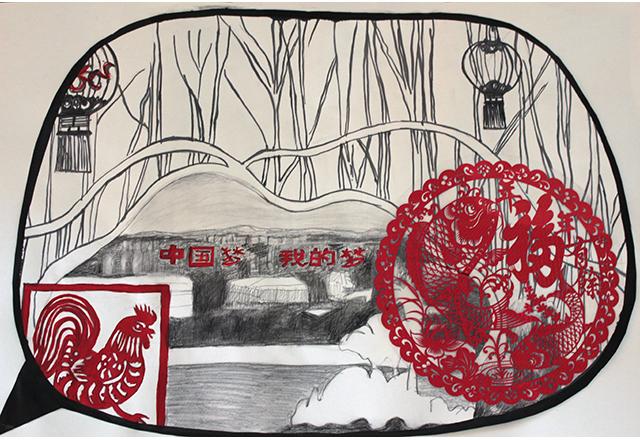
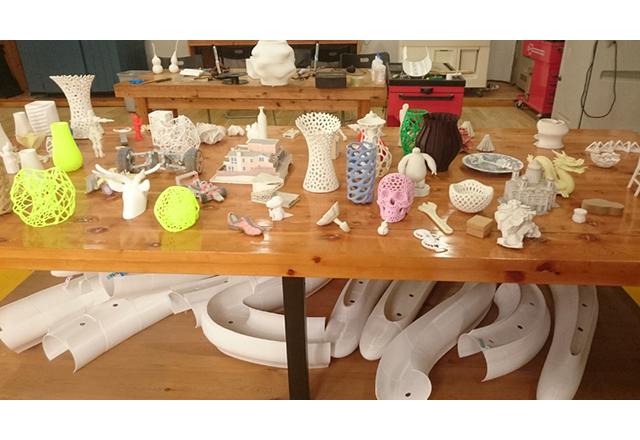
Studio/Residency/Exhibition :
With its particular dimensions, the E Art space prompted me very fast to establish a work method taking into account all the available slots in the January and February timetable. The production principle for pieces with a view to the final work was to be part of something effective, in the choice of the project, media and materials. Photographic references, videos, drawings, visits and various trips made provided the stuff of the work. High ceiling, large area on two levels, large windows and walls, all involving an overall approach to the exhibition space.
I had already had a chance, during a previous journey in Shandong province for the ceramic project of the EESAB in Quimper, to appraise the fact that traces of the past existed together with a day-to-day and rapid development of an urbanization programme by sections of neighbourhoods and urban zones.
Shanghai and Hangzhou also adopt this juxtaposition of periods, while at the same time encouraging an economic and social present. Umberto Eco, in his book La guerre du faux used different examples to deal with the sense of the fake in differing domains, such as the media, architecture, and culture. He defined it as a journey into the hyper-reality of the world, pointed a finger at the policies of the culture and tourist industry which sell truth, and transport the consenting onlooker towards a glorious past, whose reality he can relay by his testimony. During the residency, I felt that I was the privileged and simultaneous witness of several periods. My wanderings in Hangzhou enabled me to observe iconic elements of the past which did not freeze the present. I managed to visually perceive in that city the fact that the Chinese artistic and cultural heritage is combined with architecture, painting and poetry.
“Reading Things”, the show’s title, borrows a chapter heading from Umberto Eco’s La Guerre du faux. I wanted to use the material that has always nurtured my intuitions about and perceptions of that country. They underpinned the content of the writings of Umberto Eco and Nicolas Bouvier, in particular Le plein et le vide: carnets de Japon. An interpretative table set forth the principles of a visual re-creation.
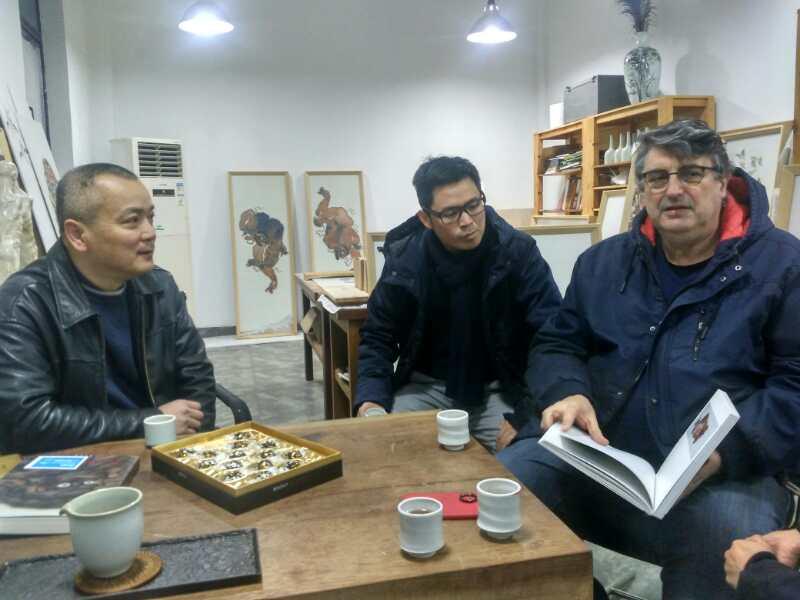
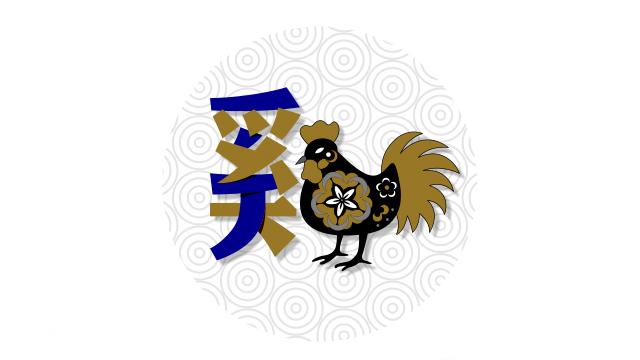
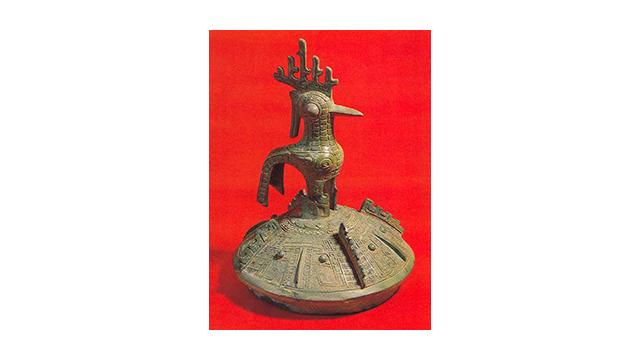
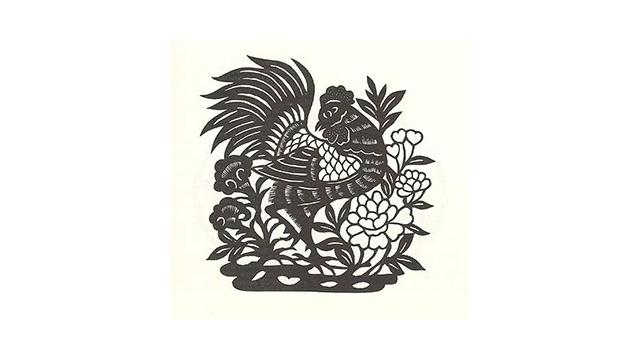
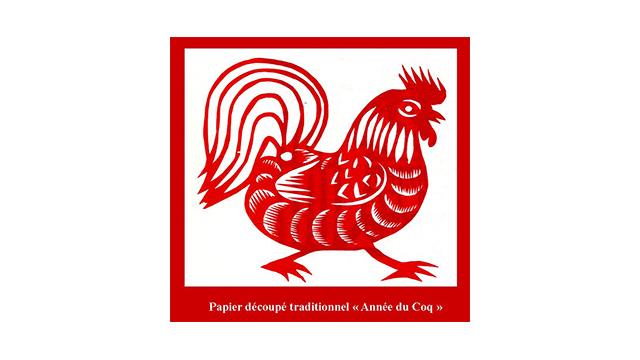
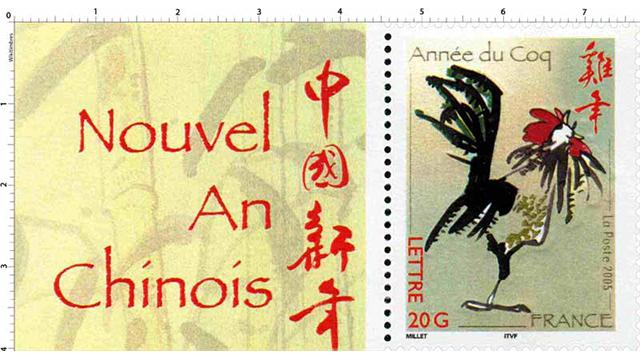
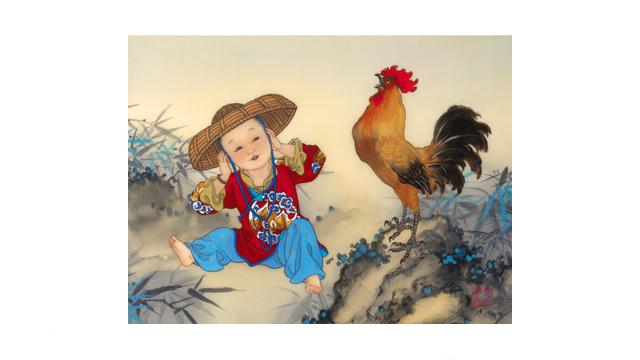
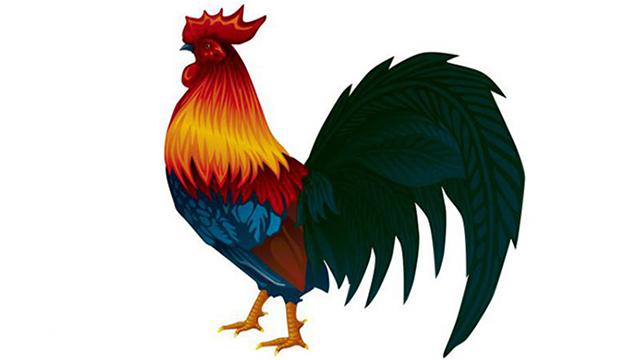
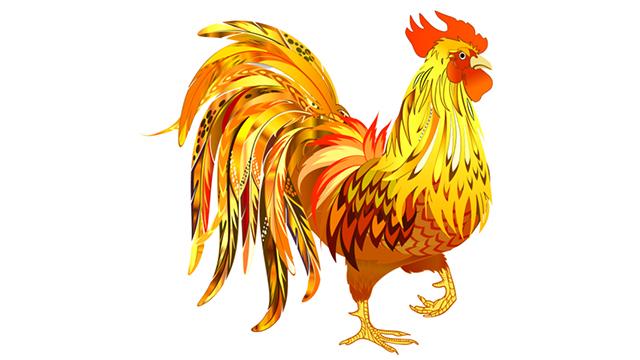
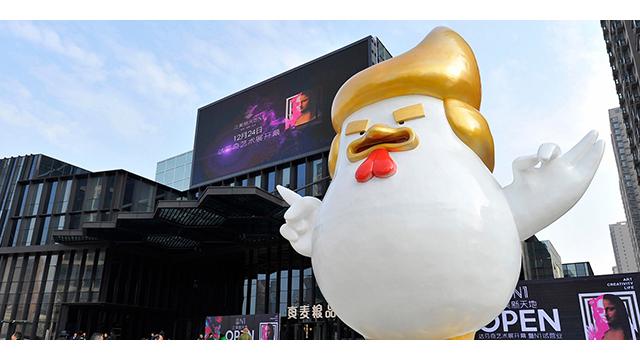
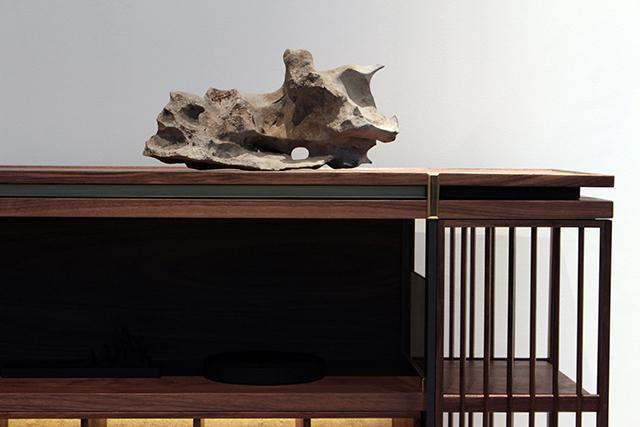
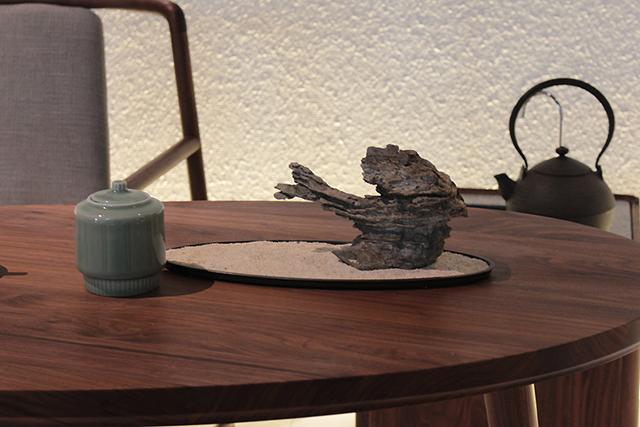
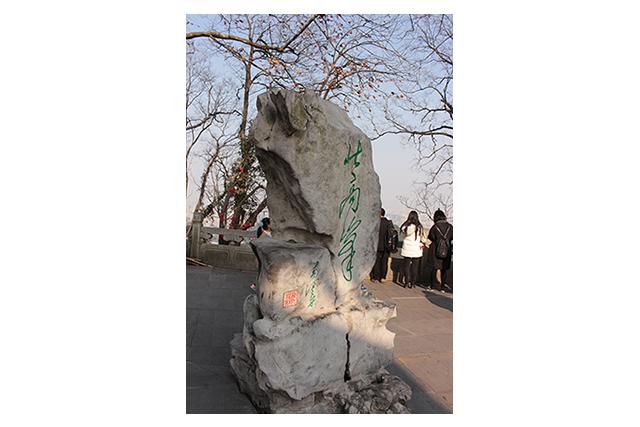
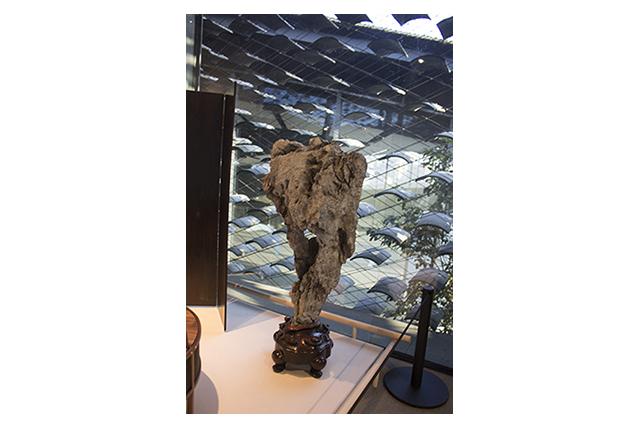
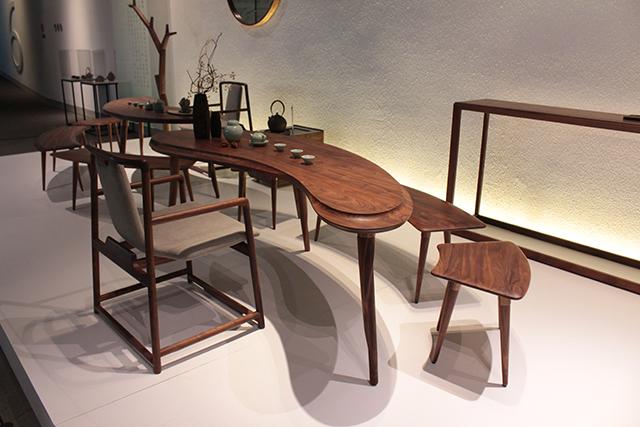
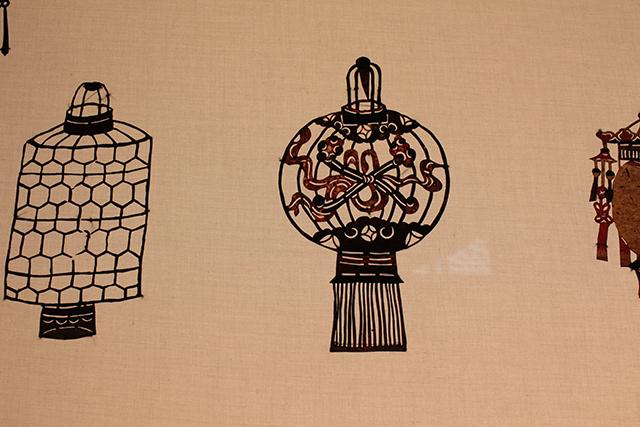
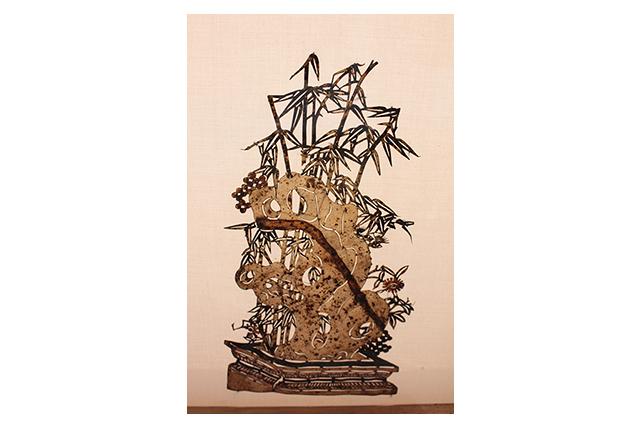
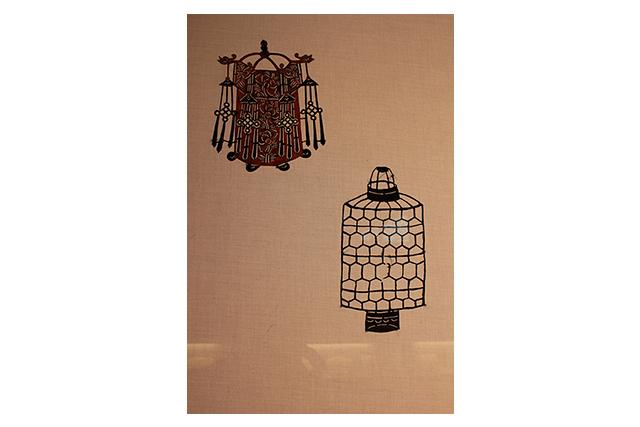
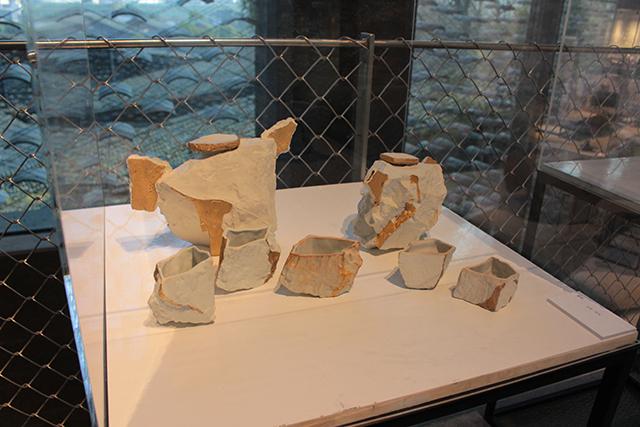
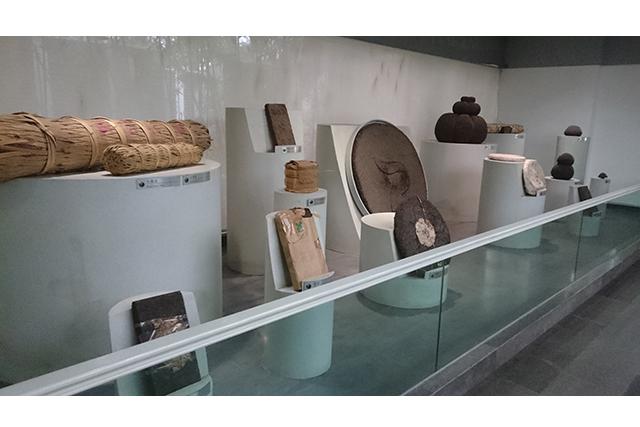
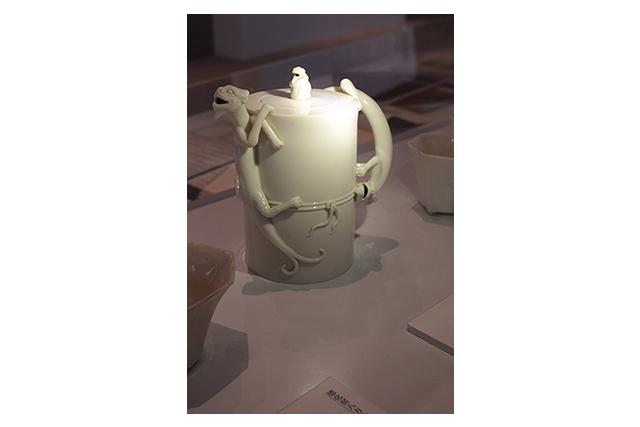
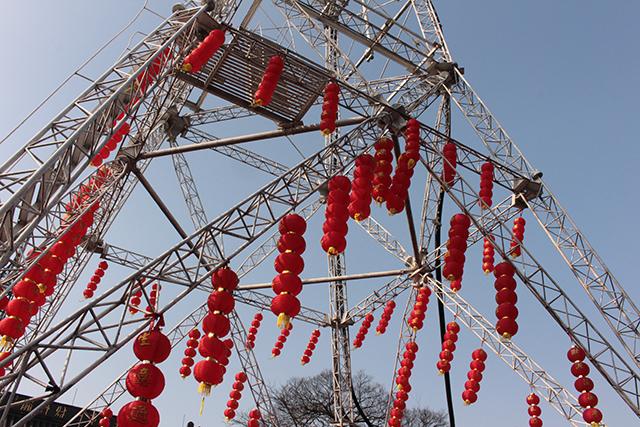
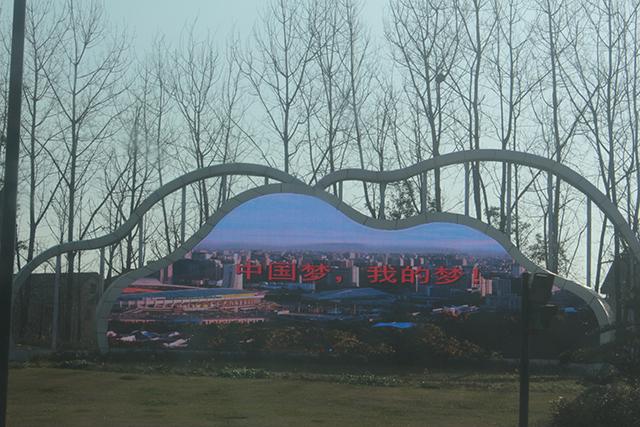
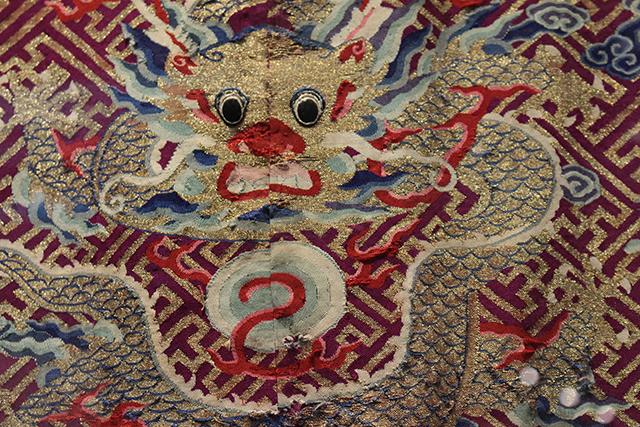
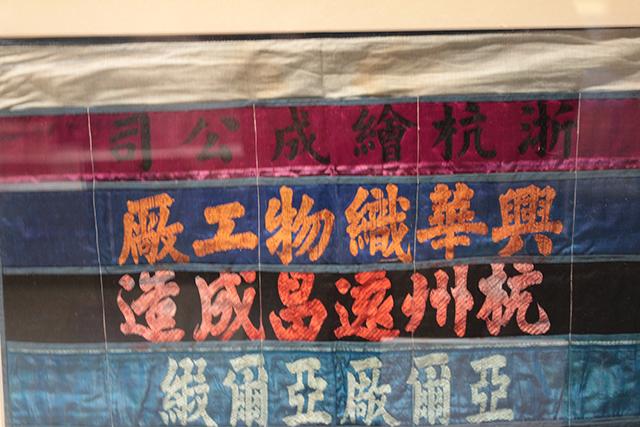
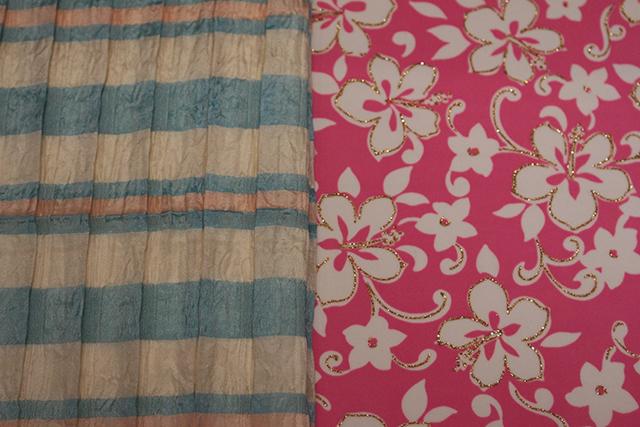
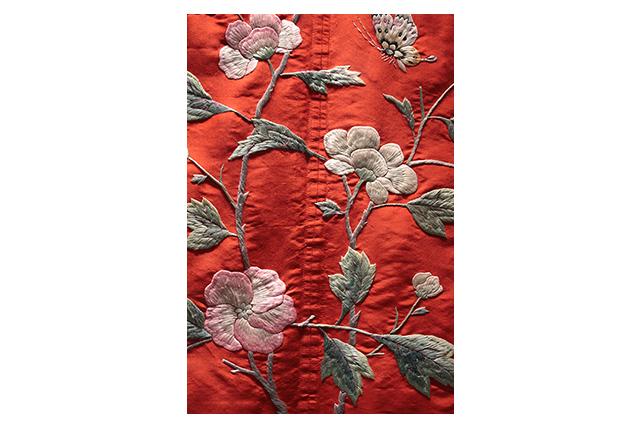
The exhibition’s form called for team work, and a production with the students who were also involved in this show. We had exchanges about the reasons for placing such and such a drawing in one spot rather than another.
The residency principle shifts the customs of a praxis. My resident’s tool kit includes drawing, photograph, video, object and sculpture. In each instance it is filled out with realities, experiences and surprises. “Reading Things” gave me the method, the reading principle for the daily round in which the residency immersed me. I became involved in an exercise of understanding, the better to lose control of it and thus form a visual language which formulates and re-creates my discoveries, and my exchanges. They were based on the observation of a constant mixture of the authentic and the fake with many different complex influences. A digital print on Canson paper, measuring 150 x 100 cm, shows a hodgepodge of references. A 5-minute video projected in the second part of the space re-uses all these cut images of the residency against a backdrop of “French Psycho” electronic music.
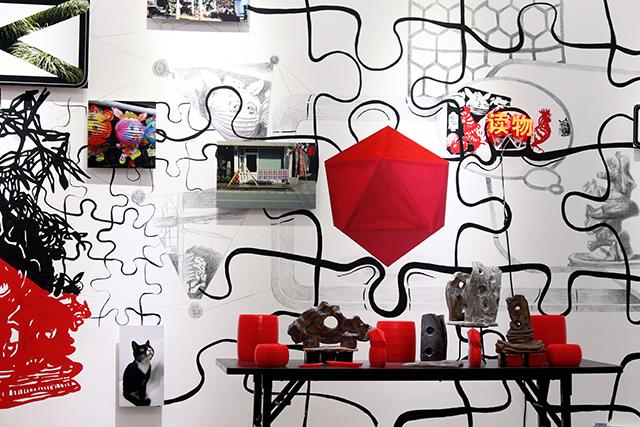
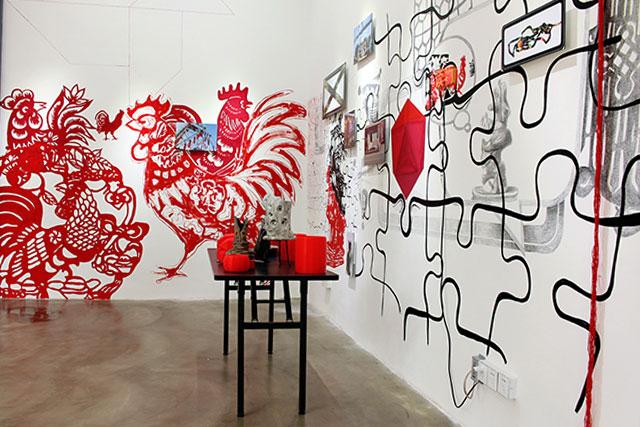
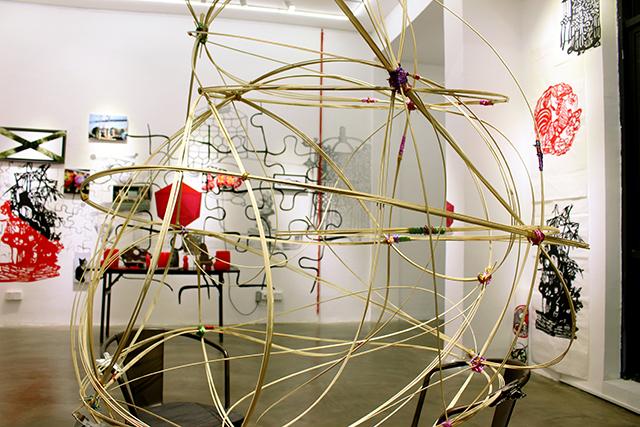
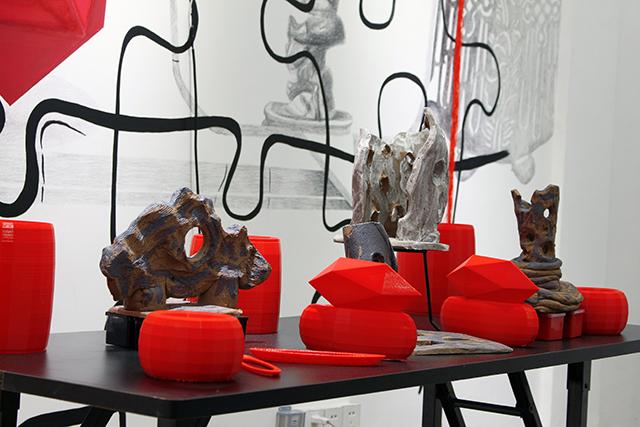
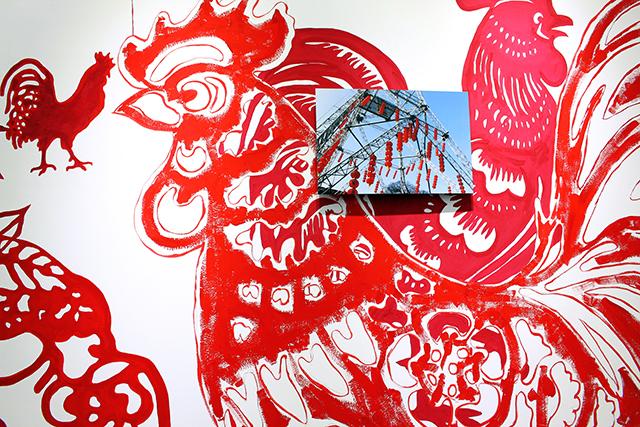
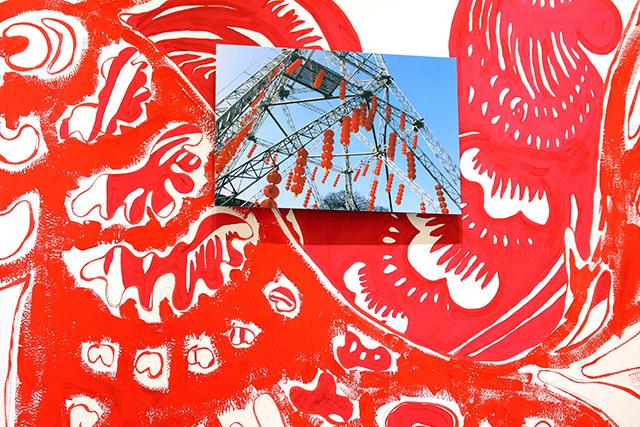
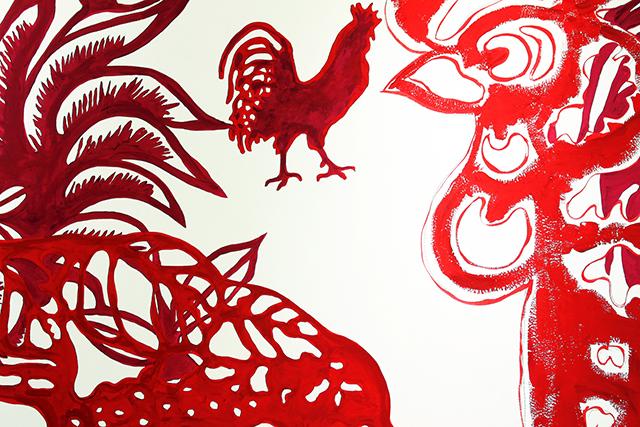
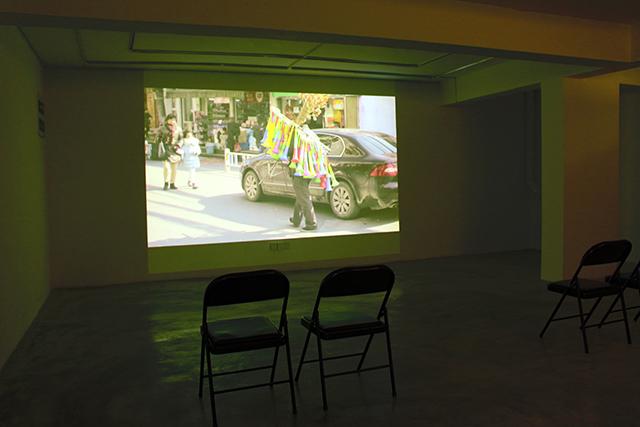
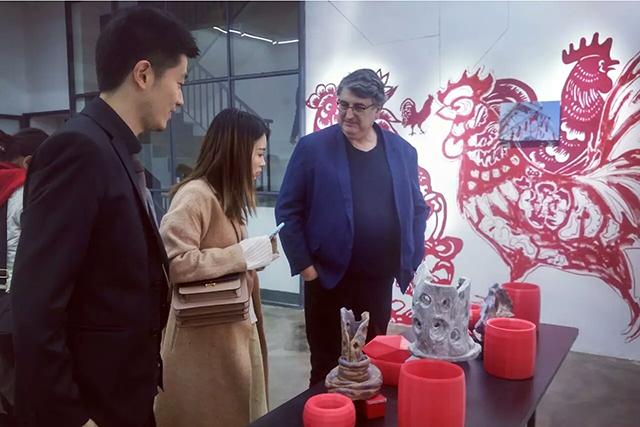
The time of a residency
Movement and immersion in the context of a residency involve an encounter with specific different geographical, cultural, artistic, and social features.
The first grant I was awarded in 1983 from the OFAJ meant that I could reside in Cologne for a year, and understand the effectiveness of the German market. In 1985, Pierre Gaudibert selected me for a residency at Asilah in Morocco as part of the festival of Arab cultures. Laurence Beaucé invited me to the Henry Clews American Foundation at La Napoule for two years. Selected by François Rouant and invited by Arman, the Villa Medecis Hors les Murs took me to New York in 1988 when rap was at its height. There I met Antoni Muntadas and other artists, and crossed paths, the way everybody did, with Basquiat and Haring.
Those periods represent valuable times which gave rise to my way of thinking; they enabled me to better define the meaning I give to my work in its relation to a context. In 1995, Le Quartier éphémère in Montreal, which has since become the Darling foundry, offered me the elements of an artistic and economic context shown in the exhibition “Le tourbillion de la vie”. In the Dordogne, at Monpazier, in 1998, I plunged into the reality of a space-time factor at a standstill and turned in a slightly absurd way towards the mediaeval period. Then, with a class from an agricultural school in Brittany, at Châteaulin, I worked with the students on the space of a heritage garden. In Fort de France, in Martinique, in 2007, at the invitation of Marcel Dinahet, I encountered the situations of a commission which incorporated a work with local children and associations in a difficult urban setting, and a meeting with Aimé Césaire.
In the path of my work, these moments of movement have always been necessary moments, periods going back to roots, and moments of a varied range of questioning bound up with my activities.
The residency creates moments when one rubs shoulders with realities outside the usual daily round, and outside the studio. My work is developing a narrative where one part is the outcome of this path. Drawing, sculpture, installation, photography, colour and video all define my work and mean that the way it unfolds passes by way of the series.
The Hangzhou residency shuffles the cards in a different way. From an emerging country—which is already no longer emerging but is in a state of full economic growth, it has seemed obvious to capture this energy based all at once on China’s rich past, the post-colonization period, the post-Mao period, and the very powerful economic and cultural upturn currently underway. This residency has immersed me in the context of a city and its energy, a constantly evolving social and visual environment, and encounters with people actively involved with E-Art, and French and Chinese personalities and artists. A busy moment of research and work, expressed by the exhibition.
The exhibition presented a residency diary on the walls of the E-Art space. In it I brought together stones of scholarly people, the cock of the Chinese new year, the graphic design of sonograms, elements of shadow theatre, the geometry of architectures, colour, and so on… kindling different activities, drawings, frescoes, photographs, ceramics, 3D prints, a bamboo sculpture… and video.
